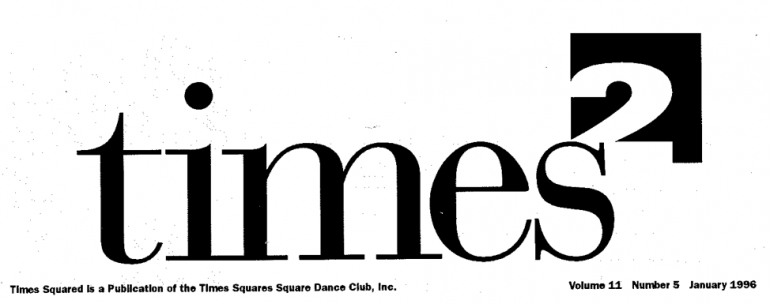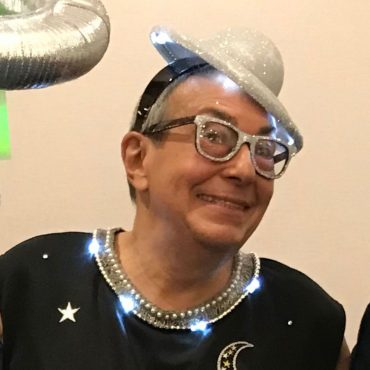Now that gay and lesbian square dancers can comfortably dance in many venues, we tend to forget that this was not always the case.
Roy Gotta’s article appeared in the February 1994 issue of the national square dance magazine, “American Square Dance”. It was reprinted in “Times Squares” in April 1994. Next time you see Roy Gotta, thank him for his early and enduring support. A critical letter to the editor in the next month’s issue will be published here next week.
Stay tuned for one reader’s response.

“Why do they have to dance at our club? Why can’t they deep to themselves? I don’t mind if they want to square dance, as long as they stay in their own clubs. This used to be a nice family club. If you let one or two in then, before you know it, your club will be taken over by them.”
Do the above statements sound familiar? Have you heard any of them recently at your club or another club where you were dancing? Well, these statements were overheard back in the late 1950’s when my father-in-law had the nerve (or was it the courage) to bring a Jewish couple to a square dance club.
Is there any difference between this and the current uproar over “allowing” gays and lesbians to dance at straight clubs and festivals? I think not. Is there any difference between this and the same uproar in the sixties when Blacks entered the square dance picture? I think not. Prejudice and hatred are the same whenever and wherever they appear. I know of one major square dance festival that has actually had meetings to discuss “the problem”.
Before I discuss attitude, let’s take a look at a couple of facts. Barring gays and lesbians from your club or dance, or segregating them at said affairs, is illegal! It is discrimination! Also, you have been dancing with gay and lesbian square dancers for many years. You just didn’t know it! Gay and lesbian dancers have been coupling up and dancing as “traditionally correct” couples. If you are concerned about coming into contact with gays, keep in mind that a week doesn’t go by that you probably have contact with a gay individual outside of the square dance activity.
I have heard the argument that “I can’t dance in a square with same sex couples.” Two things come to mind when I hear this. One, this person probably didn’t say anything in the past when two women were dancing together, and two, this person is a very poor dancer. Some men are uncomfortable swinging other men. This is not a problem if you just say so up front. It is no different than not swinging someone of either sex who has a physical problem.
Let’s suppose for a moment that your club decides to break the law and ban gay and lesbian dancers from dancing as same sex couples at your dances. Do you now follow the same rules for the two senior ladies who have been dancing together at your club for the last 2 years? How do you know for sure that they are not lesbians? And how about the times when I have jumped into a square to be the needed 8th body? Since that 8th position was the “girl’s” part, do seven people have to sit down, because the rules prohibit same sex couples? Does my 84-year-old mother-in-law have to give up the activity she has been doing for over 40 years because she dances mostly the “boy’s” position?
Finally, whatever happened to “Friendship Set to Music?” Does this mean only my friends, by my rules, and to my music? It is not easy to change one’s attitudes and feelings. It is similarly not easy to accept lifestyles and customs that are radically different than your own. Remember, you are not being asked to accept, condone or embrace anyone else’s lifestyle. However, you are being asked to not deny anyone the right to enjoy their chosen form of recreation. After all, that’s all square dancing is, recreation. It happens to be recreation that involves interaction and interdependence on at least 7 other people. If your prejudices are so great that you cannot even dance in the same square with a person who believes or lives differently than yourself, then perhaps you should be looking for another form of recreation.


